This was another good butterfly week. The weather was a little cooler so it was easier to be outside and there were more butterflies out in the open. When it gets very hot the butterflies hide in shady places and it’s difficult to find them.
I found two new butterflies for the farm and for Mike Reese’s butterfly maps.
One is a very small skipper that I’ve seen numerous times but have had trouble getting a photo so I could positively identify it. It’s a Least Skipper – a very small bright orange skipper with wide brown edges on the tops of its rounded wings. It flies close to the ground through the sedges and grasses in our wetland.
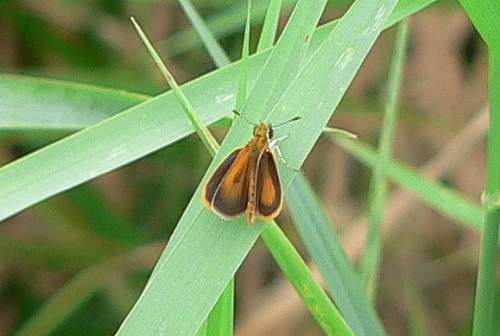

The other new one is a Peck’s Skipper – a medium sized skipper that I also saw in the wetland. Mike Reese confirmed the ID – there are so many skippers and they’re so similar that I have trouble remembering the differences.
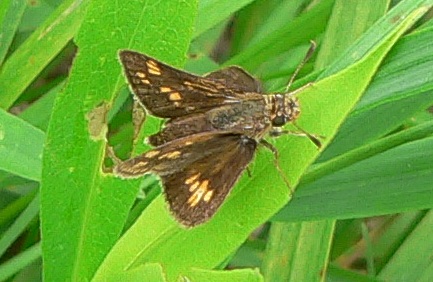
The prairies are still looking nice but the Canada Goldenrod is beginning to bloom. Canada Goldenrod (Solidago canadensis) is a native, but it’s very aggressive. I haven’t planted it in any of our prairies, but there are so many seeds in the ground and plants around the edges of fields and roads that plants always appear about 3 years into our prairie plantings.
Burning seems to encourage Canada Goldenrod. The east and west sides of Center Valley used to be fairly similar, but after we burned the eastern half it has had much more Canada Goldenrod and fewer prairie grasses. The only thing that seems to help control the goldenrod is to mow just before it flowers. If there are enough other plants to compete with it, it will usually be set back a bit the following year.
I decided to try that in one section of East Center Valley, so Mike mowed it this week. If it works well, we’ll mow another section next year.

Wild Parsnip seed is maturing in the wetland, so this was my last chance to get rid of as much as I can for this year. I spent some time in the best parts of the wetland, clipping off and collecting the seeds. I’ll dry them out for a few weeks and then burn them.
The ponds that the beavers make in the wetland are beautiful right now (in spite of the weeds) – very calm and still, surrounded by lush vegetation, and full of frogs.
This is Willow Bend, which always has a beaver pond.

Here’s a pond closer to our driveway.
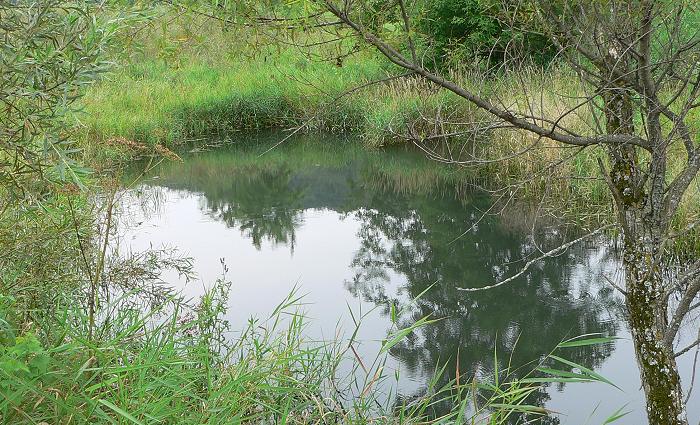
And this is looking across another pond to the top of the beaver’s dam.

We were pleased to see that the beavers haven’t tried rebuilding the dam near the driveway – yet.
The prairie I planted on the septic system field near the house has been disappointing and frustrating. The soil was mostly topsoil from the part of the field where the house was built, so it was full of weed seeds. Initially I just planted it anyway, and it came up full of weeds. We let it grow for a few years and then mowed and sprayed it in the fall, hoping that would kill some of the weeds and let the prairie plants grow. I’ve also been adding lots of seeds of the more aggressive prairie plants. We mowed again for a few years and this year we decided to let it grow up and see what happened. There are plenty of weeds – Red Clover, thistle, and Queen Anne’s Lace. But there are some prairie plants – Black-eyed Susan, Oxeye, Monarda, and lots of native thistles. There’s one particularly lush clump of native thistles – Field Thistle (Cirsium discolor), and Tall Thistle (Cirsium altissimum).
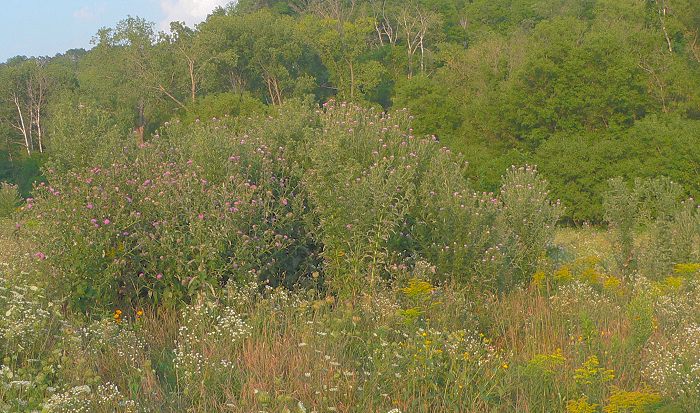
Here you can see Tall Thistle in the front, with Field Thistle beyond.

Goldfinches make their nests at the end of the summer when the thistles are beginning to go to seed. They use the down from thistles to line their nests, so they are spending a lot of time now sitting on the plants and chirping and pecking away at the seed heads.
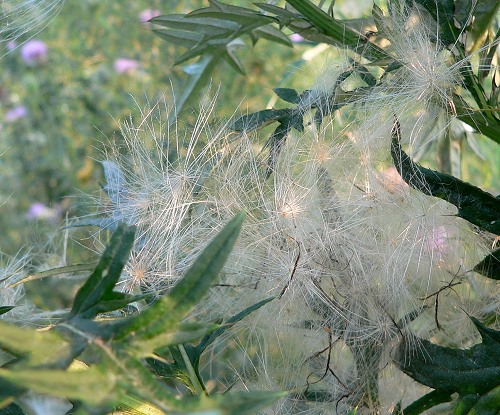
Thistles are in the Asteraceae – the family that includes asters, dandelions, and coneflowers. The flower heads actually contain many tiny flowers, so they are very attractive to bees and butterflies.
The bees bury themselves in the thistle flowers looking for nectar.
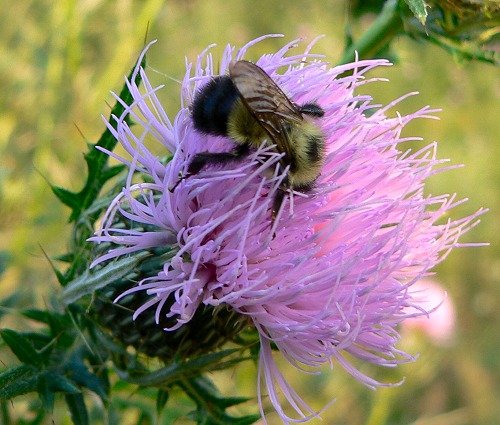
Here’s a view looking south from the northern end of 3 Finger Valley – to the area where Mike mowed a few weeks ago.
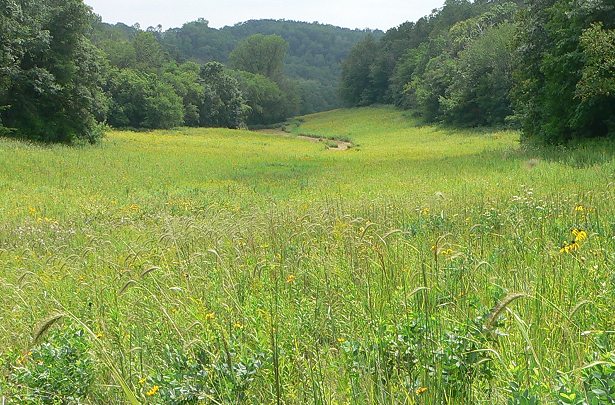
And here’s one of my favorite flowers that has been doing well in all the prairies this year – Illinois Tick-trefoil (Desmodium illinoense).

